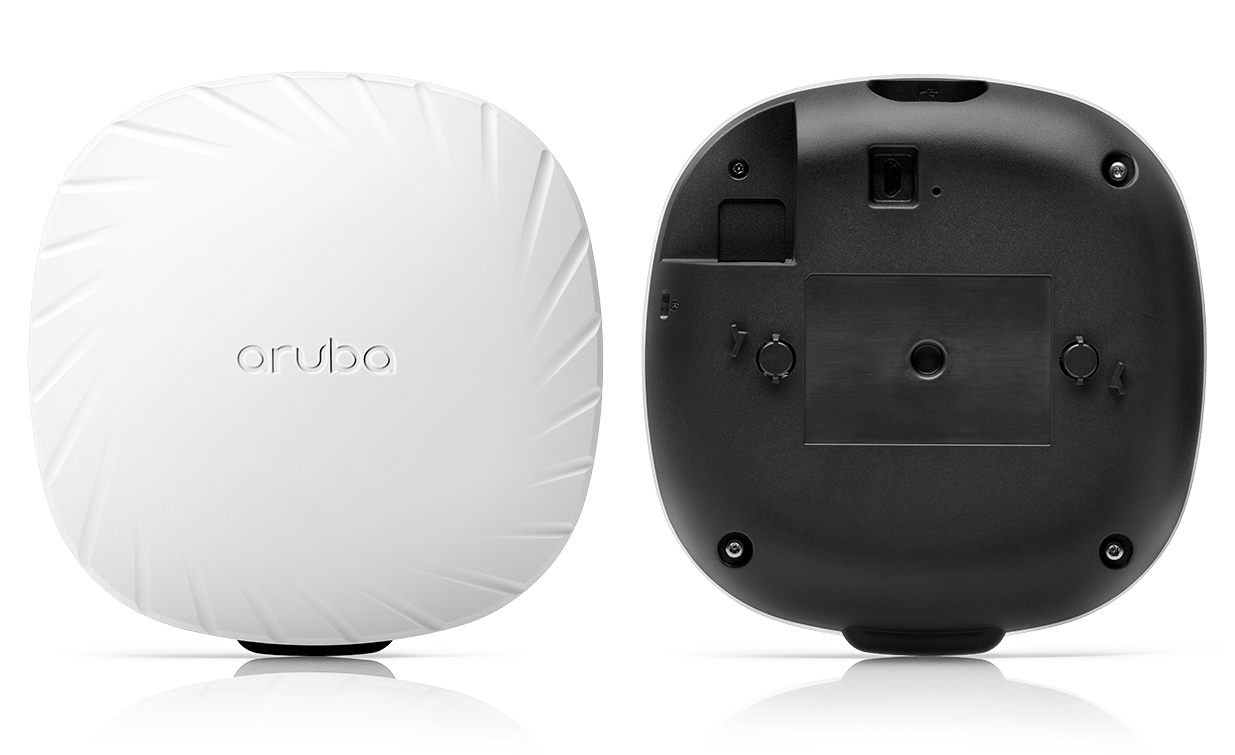Affordable Wi-Fi 6 APs – ideal for low-to-medium density enterprise environments. Upgrade your wireless performance with affordable Wi-Fi 6 coverage to meet ever-growing demand.
Greater efficiency
Built on Wi-Fi 6 standards and Wi-Fi CERTIFIED, 503 Series APs include support for OFDMA for higher throughput and Target Wake Time to extend the battery life of IoT devices.
Simple and secure access
HPE Aruba Networking 503 Series Indoor Access Points offer enhanced security with WPA3 and Enhanced Open for stronger encryption and guest access. The Trusted Platform Module secures credentials, keys, and boot code while the Policy Enforcement Firewall automatically applies policies based on user role, device type, applications, and location and dynamically segments traffic.
Cost effective, comprehensive coverage
Options include single or eco-friendly ten-packs for affordable indoor Wi-Fi coverage for low-to-medium density environments. USB plug-ins for IoT support are also available.

Features
With 1.49 Gbps maximum real-world speed and support for 802.11ax (Wi-Fi 6), the 503 Series delivers affordable yet comprehensive coverage.
1.49 Gbps maximum real-world speed
Delivers speed and reliability with HE80/HE20 channels for K-12 schools, branch offices, and retail stores.
Dynamic segmentation
Automatically enforces policies for users, devices, and applications across wired and wireless networks.
Wi-Fi optimization
Aruba ClientMatch uses AI to steer traffic to the best AP while Aruba AirMatch dynamically allocates RF resources to improve coverage and eliminate gaps.
Application assurance
Aruba Air Slice dynamically allocates and tunes radio resources to ensure application service levels and optimize the user experience.
Flexible deployment
The 503 Series APs can be deployed in campus, branch, and remote locations and with cloud-based or on-prem management.
Hardware variants
AP-503: Campus AP platform, integrated antennas
Wi-Fi radio specifications
AP type: Indoor, dual-radio, 2.4GHz and 5GHz (dual concurrent) 802.11ax 2×2 MIMO
2.4GHz radio: Two spatial stream Single User (SU) MIMO for up to 574Mbps wireless data rate with 2SS HE40 802.11ax client devices (287Mbps for HE20)
5GHz radio: Two spatial stream Single User (SU) MIMO for up to 1.2Gbps wireless data rate with 2SS HE80 802.11ax client devices
Up to 256 associated client devices per radio, and up to 16 BSSIDs per radio
Supported frequency bands (country-specific restrictions apply):
400 to 2.4835GHz ISM
150 to 5.250GHz U-NII-1
250 to 5.350GHz U-NII-2A
470 to 5.725GHz U-NII-2C
725 to 5.850GHz U-NII-3/ISM
850 to 5.895GHz U-NII-4
Available bands and channels: Dependent on configured regulatory domain (country)
Dynamic frequency selection (DFS) optimizes the use of available RF spectrum in the 5GHz band
Supported radio technologies:
11b: Direct-sequence spread-spectrum (DSSS)
11a/g/n/ac: Orthogonal frequency-division multiplexing (OFDM)
11ax: Orthogonal frequency-division multiple access (OFDMA) with up to 8 resource units
Supported modulation types:
11b: BPSK, QPSK, CCK
11a/g/n: BPSK, QPSK, 16-QAM, 64-QAM and 256-QAM (proprietary extension)
11ac: BPSK, QPSK, 16-QAM, 64-QAM, 256-QAM and 1024-QAM (proprietary extension)
11ax: BPSK, QPSK, 16-QAM, 64-QAM, 256-QAM and 1024-QAM
802.11n high-throughput (HT) support: HT20/40
802.11ac very high throughput (VHT) support: VHT20/40/80
802.11ax high efficiency (HE) support: HE20/40/80
Supported data rates (Mbps):
11b: 1, 2, 5.5, 11
11a/g: 6, 9, 12, 18, 24, 36, 48, 54
11n: 6.5 to 300 (MCS0 to MCS15, HT20 to HT40), 400 with 256-QAM (proprietary extension)
11ac: 6.5 to 867 (MCS0 to MCS9, NSS = 1 to 2, VHT20 to VHT80); 1,083 with 1024-QAM (MCS10 and MCS11, proprietary extension)
11ax (2.4GHz): 3.6 to 574 (MCS0 to MCS11, NSS = 1 to 2, HE20 to HE40)
11ax (5GHz): 3.6 to 1,201 (MCS0 to MCS11, NSS = 1 to 2, HE20 to HE80)
802.11n/ac packet aggregation: A-MPDU, A-MSDU
Transmit power: Configurable in increments of 0.5 dBm
Maximum (aggregate, conducted total) transmit power (limited by local regulatory requirements):
Per radio (2.4GHz / 5GHz): +21 dBm (18dBm per chain)
Note: conducted transmit power levels exclude antenna gain. For total (EIRP) transmit power, add antenna gain.
Advanced Cellular Coexistence (ACC) minimizes the impact of interference from cellular networks
Maximum ratio combining (MRC) for improved receiver performance
Cyclic delay/shift diversity (CDD/CSD) for improved downlink RF performance
Space-time block coding (STBC) for increased range and improved reception
Low-density parity check (LDPC) for high-efficiency error correction and increased throughput
Transmit beam-forming (TxBF) for increased signal reliability and range
802.11ax Target Wait Time (TWT) to support low-power client devices
Table 1. HPE Aruba 503 Series Wi-Fi 6 Access Points
Part number | Description |
Internal antenna access points (1-packs) | |
R8M95A | HPE Aruba Networking Access Point-503 (EG) Dual Radio 2×2:2 802.11ax Wi-Fi 6 Campus Access Point |
R8M96A | HPE Aruba Networking Access Point-503 (IL) Dual Radio 2×2:2 802.11ax Wi-Fi 6 Campus Access Point |
R8M97A | HPE Aruba Networking Access Point-503 (JP) Dual Radio 2×2:2 802.11ax Wi-Fi 6 Campus Access Point |
R8M98A | HPE Aruba Networking Access Point-503 (RW) Dual Radio 2×2:2 802.11ax Wi-Fi 6 Campus Access Point |
R8M99A | HPE Aruba Networking Access Point-503 (US) Dual Radio 2×2:2 802.11ax Wi-Fi 6 Campus Access Point |
Internal antenna access points (eco-friendly 10-packs) | |
S1E83A | HPE Aruba Networking Access Point-503 (RW) 10-Pack Dual Radio 2×2:2 802.11ax Wi-Fi 6 Campus Access Point |
S1E84A | HPE Aruba Networking Access Point-503 (US) 10-Pack Dual Radio 2×2:2 802.11ax Wi-Fi 6 Campus Access Point |